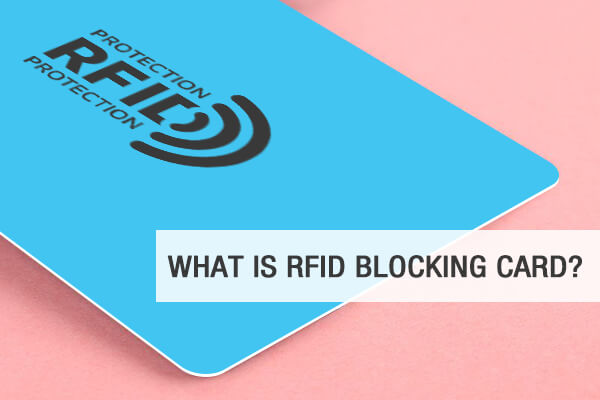RFID technology is widely used across the globe. Contactless scanning is the key to fast and streamlined transactions in the cash-free economy that we live in. Conversely, for many people, the increasing prevalence of RFID items raises new security concerns especially, now that the advent of more products uses the technology. Consequently, on the market today, there are quite a large number of products that claim to block RFID. An RFID blocking card is an example, that reduces the transmitted signal power of the reader, preventing the microchip in the RFID card from working.
What does an RFID blocking card do?
An RFID blocking card stops fraud or theft of money, data, and ID. These cards offer protection for all contactless cards including hotel keys, ID cards, travel cards, access cards, credit, and debit cards from being scanned or copied. The cards block frequencies of 13.56 MHz and 125 kHz. The cards are flexible, light, and ultra-thin, therefore, they work both in front and behind the contactless cards. The blocking cards can be placed, alongside your contactless cards in either your purse, ID holder, or wallet. They guarantee protection against unauthorized payments or theft of your information and still allow the card owner to fully use their cards.
How does an RFID blocking card work?
For an RFID card to work, RFID readers transmit signals that power the microchip in the card. The microchip in the card then powers up and sends data back to the reader allowing the machines to scan them from a short distance. This system facilitates contactless payment and some worry could be vulnerable to criminal manipulation. RFID blocking cards can effectively prevent the scanning function on a card by either blocking/deflecting RFID signals or by transmitting a signal that interferes with the reader. However, this only works with one frequency and often a certain type of technology.
Types of RFID blocking cards
RFID blocking cards are either active or passive and they work in several ways. Passive protectors or shields can absorb the RFID signal or deflect it, while the active RFID protectors or shields use a microchip. Both work by typically sending out an interfering signal. They both effectively ‘pretend’ to be another card causing a card clash issue in the reader. They also drain the power from the transmitting signal required to power the chip in your card. Therefore, if the chip can’t receive enough power to function, it can’t transmit a reply.
Passive shielding or protectors
They work in two ways, absorption loss where power/ energy is absorbed in the shield, and reflective loss (bounced radio frequency energy). Both types reduce the transmitting radio frequency signal that would power the RFID chip. However, absorbing or deflecting RFID signals for contactless payment cards and banking cards at 13.56 MHz is far simpler than blocking security cards and passes at 125 kHz. To protect the RFID chip, 125kHz requires near-field shielding.
Conclusion
With the right kind of metal, the reader can be prevented from accessing the data when an RFID reader releases energy to get information from a tag. The metal can block the flow of information from one point to another as it will form a magnetic field. The RFID reader can be an excellent electricity source as it powers and activates the wallet’s magnetic field.
Click here to learn more about the latest eco-friendly material that we developed for making RFID blocking cards.
You can also click here to learn more about the products that you can use in your project. If you are not sure, welcome to contact our sales experts any time.
.png)
